Laurie Anne Walden, DVM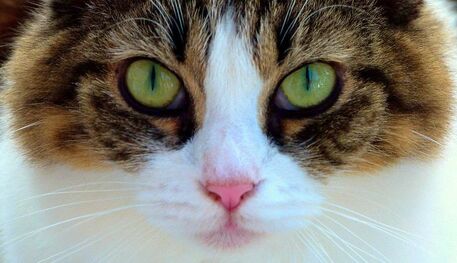 Public domain photo by Alexandre Burner on Flickr Public domain photo by Alexandre Burner on Flickr Hepatic lipidosis, or fatty liver syndrome, is a life-threatening condition in cats that stop eating for any reason. It’s most common in overweight or obese cats but can affect cats of any weight. Cats that don’t eat for more than a couple of days need to see a veterinarian without further delay. Causes When cats don’t eat, their bodies start to break down stored body fat to use for energy. Eventually the level of metabolized fat in the blood is higher than the body can use, and the excess fat is stored in the liver cells. The liver cells become swollen with fat and can no longer function normally, resulting in liver failure. The swollen liver cells also squash the bile ducts within the liver, obstructing the flow of bile (which is needed for normal digestion). Overweight and obese cats are at higher risk than average-weight cats because they have more body fat to metabolize. The tendency to store metabolized fat in liver cells is a quirk of feline liver function, so hepatic lipidosis is much more common in cats than in dogs. Anything that makes a cat stop eating can cause hepatic lipidosis. The cause is usually an underlying disease like a digestive system disorder, diabetes, kidney disease, cancer, or hyperthyroidism. Healthy cats can develop hepatic lipidosis if they don’t eat for some reason, like changing to a new food they don’t like, experiencing a stressor like a new pet or a house move, boarding, getting accidentally locked in a garage, getting lost outdoors, and so forth. Signs Cats with hepatic lipidosis usually have signs of liver disease like these:
Cats might also have signs related to the underlying disease that caused them to stop eating. Diagnosis Baseline diagnostic tests (bloodwork and urinalysis) are run to evaluate liver function, assess the cat’s overall condition, and look for an underlying disease. Cats with signs of liver disease usually also have imaging studies like ultrasound of the abdomen. The diagnosis of hepatic lipidosis can be confirmed with liver biopsy, although not all cats need this step. Treatment Cats with hepatic lipidosis are typically hospitalized for at least a few days. Treatment includes intravenous fluids, correction of electrolyte imbalances and anemia (which can happen with liver disease), treatment for nausea and vomiting, nutritional support, and if possible, treatment of the underlying disease. Nutritional support is crucial for cats with hepatic lipidosis so their bodies will stop metabolizing fat for energy. Because most cats with this condition don’t eat on their own, they are fed through a tube at first. Feeding tubes are placed through the nose (cats tolerate this better than you would think) or surgically placed through the skin. Some cats need to continue tube feeding for weeks. These cats receive surgically placed feeding tubes designed for long-term use, and their owners must continue the tube feedings at home. Prognosis Most cats that receive prompt intensive care (including early tube feeding) recover from hepatic lipidosis. The long-term prognosis depends on whether the underlying disease is treatable. Prevention Keeping a cat at a lean body condition reduces the risk of hepatic lipidosis. For cats that stop eating, early intervention to get nutrition into the cat—feeding something the cat will eat, using an appetite stimulant medication, or starting tube feedings—can help prevent hepatic lipidosis. Cats should never be force fed, though. Placing food directly into a cat’s mouth by hand or through a syringe can cause a cat to avoid that food in the future and be even less likely to eat on its own. Image source: https://www.flickr.com/photos/139162177@N05/46079745404/ Laurie Anne Walden, DVM Photo by Edson Torres on Unsplash Photo by Edson Torres on Unsplash Treats are fun to give and are useful for training. But in large enough quantities, treats and table food can contribute to weight gain and throw off the nutritional balance of a pet’s diet. Keep these points in mind:
If you live with other people, you probably aren’t the only person giving your pet treats. Talk to your veterinarian about a realistic nutrition plan that will work for your household, especially if your pet is overweight or has special nutritional needs. Calories The calories in treats and table food can add up quickly for a small animal that needs only a fraction of the calories that a person eats. To find out how much your pet should eat in a day, start with your pet food manufacturer’s feeding guide or use a calorie calculator. Your pet’s individual requirement might be higher or lower than the estimate from a feeding guide or calorie calculator, so keep an eye on your pet’s body condition and adjust the amount fed as needed. Here’s how to find your pet’s daily calorie requirement:
Nutritional Balance A balanced diet has the right proportions of vitamins, minerals, protein, and fat for an animal’s species and life stage. For example, cats need a higher percentage of dietary protein than dogs do, and growing animals need more calcium than adults do. Pet foods sold as complete and balanced diets must meet nutrient requirements set by the Association of American Feed Control Officials (AAFCO). The packaging will include a statement that the product meets AAFCO standards for a certain species and life stage. Products sold as treats don’t have to meet these nutrient requirements. As long as the treats make up less than 10% of the daily calorie intake, their nutrient content isn’t that important. But if treats account for more than 10% of the daily calories, they can unbalance the diet. Treat Ideas These treats don’t contain many calories and are safe for healthy dogs and cats. If your pet has a food allergy or a medical condition, ask your veterinarian about appropriate treats.
Image source: https://unsplash.com/photos/hjzs2nA4y-k Laurie Anne Walden, DVM Photo by M Burke on Unsplash Photo by M Burke on Unsplash The 3 main allergy categories in dogs and cats are allergies to environmental substances, fleas, and food. Food allergies are the least common, diagnosed in about 15% to 20% of dogs and cats with itchy skin and less than 1% of dogs and cats with any disease.[1] Many animals with allergies are allergic to multiple substances in different categories. Causes An allergy develops after the immune system has become sensitized to the trigger substance. This means that food allergies take time to develop. Any food ingredient that a dog or cat has been eating for a while could potentially cause a food allergy. A new food that an animal just started eating wouldn’t cause allergy symptoms. The most commonly reported food allergy triggers are ingredients that are most common in dog and cat diets; examples are beef, chicken, dairy products, wheat, and fish. But anything an animal has eaten could theoretically be responsible, and studies have reported individual dogs and cats becoming allergic to foods as diverse as kidney bean, barley, and tomato.[2] Signs Itching is the most common sign of any type of allergy in dogs and cats. Itching caused by a food allergy is typically nonseasonal, but because animals with a food allergy can also be allergic to environmental substances, their itching might be worse at certain times of the year. Food allergies cause the same skin problems as other allergies. Repeated skin and ear infections are common. Food allergies can also cause digestive tract symptoms. These are some of the signs:
Diagnosis The only way to diagnose food allergy in dogs and cats is with an elimination diet trial. An elimination diet is formulated to eliminate all possible allergy triggers from the animal’s food. Food allergy is diagnosed if the allergy signs improve during the diet trial. Single-ingredient challenge trials are then used to pinpoint the trigger ingredients. An elimination diet trial usually lasts at least 8 weeks. During the trial, the animal can eat nothing except the elimination diet and approved treats: no flavored medications, table food, chew toys made from animal products, and so forth. Two types of prescription diets are used as elimination diets. Limited-ingredient diets have unusual protein and carbohydrate sources the pet is unlikely to have eaten before. Hydrolyzed protein diets have proteins broken down into molecular units too small to trigger an allergic response. Home-cooked elimination diets are appropriate for some pets and are best planned with the input of a veterinary dermatologist or nutritionist. Just changing the brand or flavor of dog or cat food doesn’t work to diagnose a food allergy. Commercial grain-free, raw, and boutique diets also don’t work as elimination diets. Nonprescription dog and cat diets usually contain some of the same ingredients (possible allergy triggers), might contain protein or carbohydrate sources not listed on the label, and can be cross-contaminated with other foods during manufacture. Veterinary dermatologists use skin tests to identify environmental substances that cause an allergic response, but skin tests can’t effectively identify food ingredients that trigger allergies. None of the blood and saliva tests that claim to diagnose food allergy have been found to be reliable. Treatment Animals with allergies are often allergic to multiple substances, so the more allergy triggers you can eliminate, the more comfortable they’ll be. For pets with food allergies, avoiding trigger ingredients reduces the allergic response. Elimination diets that are nutritionally complete can be fed long term as therapeutic diets. Some pet owners prefer to find a less expensive nonprescription diet that lacks their pet’s trigger ingredients. Effective flea prevention is especially important for animals with allergies to eliminate the possibility that a flea allergy is contributing to the itch. References 1. Olivry T, Mueller RS. Critically appraised topic on adverse food reactions of companion animals (3): prevalence of cutaneous adverse food reactions in dogs and cats. BMC Vet Res. 2016;13(1):51. doi:10.1186/s12917-017-0973-z 2. Mueller RS, Olivry T, Prélaud P. Critically appraised topic on adverse food reactions of companion animals (2): common food allergen sources in dogs and cats. BMC Vet Res. 2016;12:9. doi:10.1186/s12917-016-0633-8 Image source: https://unsplash.com/photos/l1UsjV2WrNM Laurie Anne Walden, DVM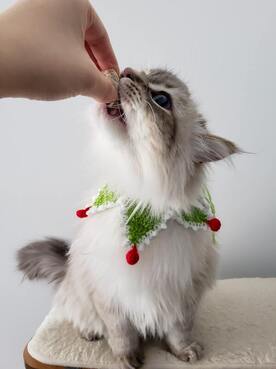 Photo by Long Ma Photo by Long Ma The way we feed cats—not just the type of diet we choose—can affect their physical and mental health. Animals are happiest and healthiest when they’re able to do all of the things that are normal for their species. For cats, normal feeding behavior is related to their nature as hunters. Almost all cat species are solitary hunters, unlike wolves and other canines that hunt in packs. (Lions are the exception.) Domestic cats have not evolved far from their wild relatives in this respect. This means that pet cats usually like to eat several small meals a day alone, according to the American Association of Feline Practitioners (AAFP). The following suggestions are from the 2018 AAFP consensus statement on feline feeding programs.[1] Potential Health Problems Related to Feeding Methods Some common feeding methods can cause physical and emotional problems for pet cats, says the AAFP. Feeding 1 or 2 large meals a day in a single location contributes to inactivity and weight gain, increasing the risk for medical problems like diabetes. Eliminating the need to hunt reduces a cat’s activity level and mental stimulation. And feeding cats in a group might lead to food-related conflict and stress, which in cats is linked to bladder and behavior problems. Suggestions for Feeding Cats
Suggestions for Multiple Cats
References 1. Sadek T, Hamper B, Horwitz D, Rodan I, Rowe E, Sundahl E. Feline feeding programs: addressing behavioral needs to improve feline health and wellbeing. J Feline Med Surg. 2018;20(11):1049-1055. doi:10.1177/1098612X18791877 2. Delgado MM, Han BSG, Bain MJ. Domestic cats (Felis catus) prefer freely available food over food that requires effort. Anim Cogn. Published online July 26, 2021. doi:10.1007/s10071-021-01530-3 Photo by Long Ma on Unsplash Laurie Anne Walden, DVM Photo by Joe Caione Photo by Joe Caione Obesity in animals is linked to diabetes, arthritis, heart disease, and other problems. For National Pet Obesity Awareness Day (October 13 this year), here are some steps you can take to help overweight pets slim down. Know Your Pet’s Ideal Weight Excess weight is very common in dogs and cats. About 56% of dogs and 60% of cats in the United States are overweight or obese, according to a 2018 survey by the Association for Pet Obesity Prevention.[1] Many owners of overweight pets don’t realize that their pet is too heavy or that the excess weight could cause health problems. Ask your veterinarian to assess your pet’s weight. If your pet is overweight or obese, don’t be discouraged and don’t take it personally; your pet has plenty of company! Check out these body condition charts to see if your pet might be overweight: https://petobesityprevention.org/pet-weight-check Talk to Your Veterinarian Before starting a weight-loss program for your pet, consult your veterinarian. A medical condition might be causing your pet’s weight gain, or your pet could have a disease like diabetes that needs to be addressed. Work with your veterinarian to develop your pet’s weight-loss plan. Every animal and household situation is unique. Does a family member feed the pet table food? Does your pet eat freely from a bowl left out all day? Does another pet in the household need a special diet? Are you able to take your dog for walks? Your pet’s plan will depend on the answers to questions like these. Reduce Calories Safely Reducing a pet’s weight might be as simple as reducing the amount of food you put in the bowl. But animals need to eat enough protein and other nutrients to stay healthy. Overweight cats that don’t eat because they don’t like a new food are at risk of developing a serious liver disease called hepatic lipidosis. A good way to start is by limiting treats and snacks. Treats should make up less than 10% of an animal’s diet,[2] and it’s perfectly fine not to feed any treats at all. If you or a family member gives your pet treats, consider making these changes:
Ask your veterinarian how many calories per day your pet should eat to lose weight safely. Once you know this number, you and your veterinarian can calculate how much to feed your pet. Your veterinarian might recommend changing diets. Some prescription diets are formulated to reduce calorie intake while keeping animals satisfied and feeling full. If you need to change your pet’s food, introduce the new food gradually over several days. Increase Physical Activity Exercise helps animals lose weight and maintain muscle. The type of exercise depends on your pet’s individual needs as well as your own preferences and available time. As always, consult your veterinarian before significantly changing your pet’s activity level, especially if your pet is elderly or has another condition like arthritis. You don’t have to take your dog on 5-mile runs or convince your cat to walk with a harness. Here are some ideas from the Association for Pet Obesity Prevention:
Monitor Your Pet’s Weight Keep track of your pet’s progress. If your pet is losing weight too slowly or too rapidly, talk to your veterinarian about adjusting the plan. References 1. 2018 Pet obesity survey results. Pet Obesity Prevention. March 12, 2019. Accessed October 7, 2021. https://petobesityprevention.org/2018 2. 2014 AAHA weight management guidelines for dogs and cats: initial assessment. American Animal Hospital Association. Accessed October 7, 2021. https://www.aaha.org/aaha-guidelines/weight-management-configuration/initial-assessment/ Photo by Joe Caione on Unsplash Laurie Anne Walden, DVM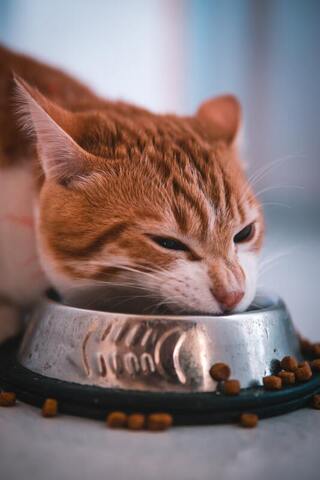 Photo by Konstantinos Feggoulis Photo by Konstantinos Feggoulis Choosing a pet food can be confusing. Much of the information that’s available online is either marketing hype or just plain wrong, and it can be hard for pet owners to tell nutrition myths from facts. Pet food labels aren’t easy to interpret either. Labels are designed to generate an emotional response and drive sales, and the bits that tell you about nutritional adequacy tend to be in tiny print. The brand of food is almost always more important than specific ingredients. Ingredient lists can be misleading; they sometimes include items that seem appealing but don’t actually add to a food’s nutritional value. An inexpensive food from a reputable manufacturer is a better choice than an expensive food from a questionable manufacturer. To help pet owners choose among the huge number of commercial diets, the World Small Animal Veterinary Association (WSAVA) has published guidelines for selecting pet foods. Their recommendations fall into 2 categories: brand choice and label information. For specific advice for your own pet, consult your veterinarian. Brand Choice
Label Information
More Information
Photo by Konstantinos Feggoulis on Unsplash Laurie Anne Walden, DVM 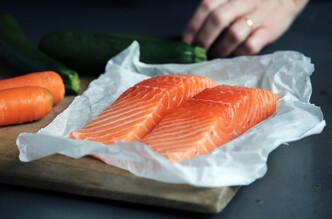 A recent study of 114 recipes for homemade diets for cats found that all of the diets were nutritionally inadequate in some way.[1] Most of the recipes, which were either posted online or published in books, were deficient in at least 1 nutrient. Some recipes included ingredients (like onions and garlic) that are toxic to cats. Other studies have found similar problems in recipes for home-cooked diets for dogs.[2-4] Some pet owners choose to make their own dog or cat food because of a pet with food allergies, a desire to feed natural products, a distrust of commercial pet food, or another reason. Preparing dog and cat food at home is time-consuming and expensive, and owners who undertake it generally just want to take good care of their pets. Dogs and cats rarely require home-prepared diets, but if you decide to make your pet’s food yourself, check the resources for safe recipes at the end of this article. Potential Problems With Homemade Pet Food Recipes for home-prepared dog and cat diets are often not nutritionally complete and balanced. Deficiencies in nutrients like iron, taurine, and calcium can lead to anemia, heart disease, and bone disease. Because many recipes are deficient in the same nutrients, rotating among different diets and ingredients won’t necessarily balance the diet. Home-prepared diets must be supplemented with the right mix of vitamins and minerals. General-purpose multivitamins for dogs or cats are usually not sufficient for pets eating homemade diets. Some vitamin supplements are made for pets eating fortified commercial diets, not those eating homemade diets with lower vitamin and mineral levels. Oversupplementation is also a possible problem. Too much vitamin D, for example, can damage the kidneys. The choice and amount of nutrients to include in a supplement depend on the ingredients of the chosen diet. Some homemade diet recipes include potentially unsafe ingredients. Others are based on misconceptions about dog and cat nutrition. Dogs and cats don’t need to eat raw meat, which poses a risk of bacterial contamination for the pet eating it and also for people in the household.[5,6] Bones in the food can damage the digestive tract unless they are ground up. Many recipes (and commercial diets) promote the mistaken idea that there is something wrong with feeding grain to dogs. In fact, grain-free diets might be linked to heart disease in dogs. Where to Find Recipes The safest homemade diets for dogs and cats are formulated by board-certified veterinary nutritionists. These specialist veterinarians have extensive training in animal nutrition. Veterinary nutritionists develop recipes for healthy animals and can also customize diets for animals with diseases or specific nutritional needs. If you use a recipe from a veterinary nutritionist, be sure to follow the recipe and feeding instructions exactly. Ingredient substitutions can change the nutritional balance of the diet.
References 1. Wilson SA, Villaverde C, Fascetti AJ, Larsen JA. Evaluation of the nutritional adequacy of recipes for home-prepared maintenance diets for cats. J Am Vet Med Assoc. 2019;254(10):1172-1179. 2. Heinze CR, Gomez FC, Freeman LM. Assessment of commercial diets and recipes for home-prepared diets recommended for dogs with cancer. J Am Vet Med Assoc. 2012;241(11):1453-1460. 3. Larsen JA, Parks EM, Heinze CR, Fascetti AJ. Evaluation of recipes for home-prepared diets for dogs and cats with chronic kidney disease. J Am Vet Med Assoc. 2012;240(5):532-538. 4. Stockman J, Fascetti AJ, Kass PH, Larsen JA. Evaluation of recipes of home-prepared maintenance diets for dogs [published correction appears in J Am Vet Med Assoc. 2014;245(2):177]. J Am Vet Med Assoc. 2013;242(11):1500-1505. 5. Freeman LM, Chandler ML, Hamper BA, Weeth LP. Current knowledge about the risks and benefits of raw meat-based diets for dogs and cats. J Am Vet Med Assoc. 2013;243(11):1549-1558. 6. van Bree FPJ, Bokken GCAM, Mineur R, et al. Zoonotic bacteria and parasites found in raw meat-based diets for cats and dogs. Vet Rec. 2018;182(2):50. Photo by Caroline Attwood on Unsplash Laurie Anne Walden, DVM 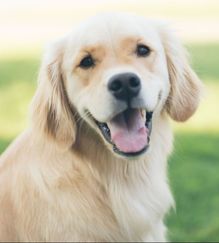 You may have read recent news reports about a possible association between grain-free diets and heart disease in dogs. Here’s what we know about this issue so far. In July 2018, the US Food and Drug Administration (FDA) notified the public that they were investigating reports of dilated cardiomyopathy in dogs eating diets whose main ingredients were legumes (such as beans, peas, and lentils) or tubers (potatoes and sweet potatoes). These ingredients are common in diets labeled “grain free.” Dilated cardiomyopathy is a disease of the heart muscle. In this disease, the heart chambers enlarge and the chamber walls become thinner and weaker. Patients may develop a murmur and an irregular heartbeat. If untreated, the condition leads to heart failure and death. Symptoms, which often don’t appear until the patient is in heart failure, include decreased energy, coughing, and episodes of collapse. The causes of dilated cardiomyopathy are not fully known, but several factors have been implicated. The disease is thought to have a genetic link; it’s familial in Dobermans, boxers, and other large breeds. In cats and sometimes in dogs, it is also associated with dietary deficiency of the amino acid taurine. Taurine is not considered an essential dietary nutrient for dogs. Normally dogs (unlike cats) can synthesize taurine from other nutrients in their diets. But some dogs, notably golden retrievers and Cocker spaniels, do develop taurine deficiency that leads to dilated cardiomyopathy. The dogs with dilated cardiomyopathy in the recent reports were of various breeds, not just the breeds considered typical for dilated cardiomyopathy. Some of the dogs with dilated cardiomyopathy who were eating grain-free diets had normal blood taurine levels, so simply adding taurine to the diet might not solve the problem. Dr Lisa Freeman, a veterinary nutritionist at Tufts University, has suggested that changes in how the body processes taurine could lead to a functional taurine deficiency even if levels of taurine in the diet and the blood are normal. A high proportion of legumes in the diet could affect the way a dog’s body metabolizes amino acids (by altering gut bacteria, for instance). Other explanations of how grain-free diets could be connected to dilated cardiomyopathy have been proposed, although most are still speculative. Taurine deficiency could potentially result from increased excretion of taurine in feces. A diet with legumes and tubers as main ingredients could be deficient in nutrients dogs need to make taurine. Other ingredients, like exotic protein sources, could also be associated with dilated cardiomyopathy, according to Dr Freeman. At this point, the potential link between grain-free diets and dilated cardiomyopathy is not clear. The FDA is continuing to investigate, and cardiologists from several veterinary schools (including the University of California, Davis) are collecting more data. What you should do So far there is no evidence that legumes and potatoes in dog food cause a problem if they are not main ingredients—that is, if the food is a conventional diet that also happens to include these ingredients. If you’re currently feeding your dog a grain-free diet or one containing exotic ingredients (like kangaroo), talk to your veterinarian about the possible risks. Also ask your veterinarian if your dog really needs to eat that diet. For the vast majority of dogs, a grain-free diet has no benefit over a conventional diet. Consult your veterinarian if your dog is showing symptoms of heart disease. If your dog has dilated cardiomyopathy, your veterinarian can test her blood taurine levels. Veterinarians and pet owners can report suspected cases of diet-associated dilated cardiomyopathy to the FDA through the online Safety Reporting Portal or by calling their state’s FDA Consumer Complaint Coordinator. Photo by John Price on Unsplash Laurie Anne Walden, DVM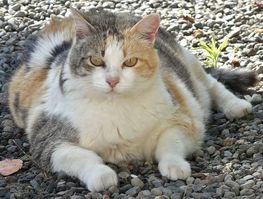 According to the Association for Pet Obesity Prevention, up to 54% of dogs and 59% of cats in the United States are overweight. That’s more than 40 million dogs and 50 million cats. Is your pet one of them? Obesity has been linked to arthritis, diabetes, heart disease, immune system disorders, liver disease, and other health problems in pets. In recognition of National Pet Obesity Awareness Day (October 11), here’s how to tell if your pet is overweight.
Body condition scoring Body condition scoring assigns a number to a pet’s condition to make it easier to track changes over time. Body condition score charts typically use either a 5-point or a 9-point scale. The ideal body condition score is 3 on a 5-point scale or 5 on a 9-point scale. Check out one of these body condition charts to see where your pet falls on the scale:
Medical problems Always bring your pet in for a physical examination before reducing its calorie intake or starting an exercise program. Some medical problems can cause weight gain. Pets with these conditions might need to go on a diet, but they also need treatment:
Other medical conditions can mimic obesity. A pet with one of these conditions might have a big belly but actually be thin overall, and restricting its food could be harmful:
We’re happy to discuss your pet’s weight with you and suggest a diet and exercise plan for your pet that will work for your family. (Telling you “no table food EVER” is not very helpful if you have a toddler in the food-throwing stage). And remember: your pet’s weight is not a reflection of your own health or of how much you love your pet. If we tell you your pet needs to lose weight, it’s only because we want your pet to live a long life and be as healthy as possible. For more information Association for Pet Obesity Prevention website Obesity (dog): American Animal Hospital Association website Obesity: The Cat Community website October 13, 2017 Photo by Almi |
AuthorLaurie Anne Walden, DVM Categories
All
Archives
June 2024
The contents of this blog are for information only and should not substitute for advice from a veterinarian who has examined the animal. All blog content is copyrighted by Mallard Creek Animal Hospital and may not be copied, reproduced, transmitted, or distributed without permission.
|
- Home
- About
- Our Services
- Our Team
-
Client Education Center
- AKC: Spaying and Neutering your Puppy
- Animal Poison Control
- ASPCA Poisonous Plants
- AVMA: Spaying and Neutering your pet
- Biting Puppies
- Boarding Your Dog
- Caring for the Senior Cat
- Cats and Claws
- FDA warning - Bone treats
- Force Free Alliance of Charlotte Trainers
- Getting your Cat to the Vet - AAFP
- Holiday Hazards
- How To Feed Cats for Good Health
- How to Get the Most Out of your Annual Exam
- Indoor Cat Initiative - OSU
- Introducing Your Dog to Your Baby
- Moving Your Cat to a New Home
- Muzzle Training
- Osteoarthritis Checklist for Cats
- What To Do When You Find a Stray
- Our Online Store
- Dr. Walden's Blog
- Client Center
- Contact
- Cat Enrichment Month 2024
|
Office Hours
Monday through Friday 7:30 am to 6:00 pm
|
Mallard Creek Animal Hospital
2110 Ben Craig Dr. Suite 100
|
Site powered by Weebly. Managed by IDEXX Laboratories

 RSS Feed
RSS Feed